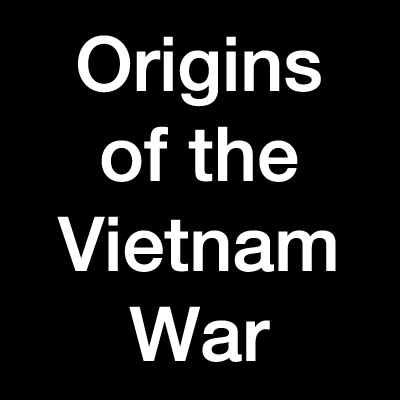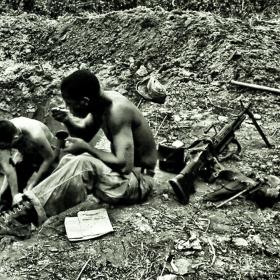Origins of the Vietnam War
The Vietnam War (1955-1975) traces its roots to the colonization of Vietnam by France in the late 19th Century.
In 1884, all of Vietnam fell under French rule; in 1887, it was fully integrated into French Indochina. France developed a Western system of education throughout its colonies, propagated Roman Catholicism, and developed a plantation economy to promote the export of tobacco, indigo, tea, and coffee. French settlers moved mostly into southern Vietnam and based themselves around the city of Saigon. Independence movements against French rule developed at the start of colonization, but France maintained control of Vietnam until World War II (1941-1945), when Japan occupied the country.
During World War II, a national liberation movement formed under the direction of communist revolutionary leader Ho Chi Minh to combat the French and the occupying Japanese forces. The Viet Minh, as they were known, coordinated their efforts with Allied troops fighting in the war’s Pacific Theater until the eventual defeat of Japan in 1945. After the war, the Viet Minh moved to the city of Hanoi in northern Vietnam and proclaimed national independence under a provisional government—a move that would lead to the outbreak of the First Indochina War (1946-1954) as France sought to reclaim its colony.
Backed by communist governments in the Soviet Union and the newly formed People’s Republic of China, the Viet Minh held their ground. In 1950, the fighting escalated to a Cold War crisis as the Korean War raged to the north. At the Geneva Conference of 1954, an accord was reached with the hope of finding a peaceful resolution, calling for the separation of Vietnam at the 17th parallel with French loyalists moving to the south and communist sympathizers moving to the north. The Geneva Accords stipulated that Vietnam be reunified by a national election in 1956, but as unification efforts stalled and Cold War tensions continued to build, the United States became increasingly involved. In addition to contributing equipment and millions of dollars in financial aid, the U.S. soon deployed a contingent of non-combat personnel with its Military Assistance Advisory Group (MAAG) to train Republic of Vietnam (RVN) forces and to oppose the spread of communism into South Vietnam.
With the Soviet Union similarly supporting its communist allies in North Vietnam—officially called the Democratic Republic of Vietnam (DRV)—and stepping up its Cold War rhetoric with the U.S. government, tensions continued to mount over the next several years. In early August 1964, the controversial Gulf of Tonkin incidents—during which the United States alleged two separate confrontations with the North Vietnamese Navy, including an unprompted attack on USS Maddox by a trio of torpedo boats—gave the impetus for the passage of the Gulf of Tonkin Resolution by Congress, enabling President Lyndon Johnson to authorize direct military action without a formal declaration of war.
By February, 1965, the U.S. had begun sustained bombing raids throughout North Vietnam and, after several attacks on air bases, deployed 3,500 United States Marines to Southeast Asia. In spite of this support, the Army of the Republic of Vietnam (ARVN) continued to suffer significant losses, leading U.S. Army General William Westmoreland—then the head of Military Assistance Command, Vietnam (MACV)—to advise President Johnson to increase the presence of American ground forces in June.
For most of 1965, American troops were limited to Search and Destroy missions to combat the guerilla warfare tactics used by the DRV, which often relied on ambushes and hit-and-run attacks to surprise their targets—a practice used throughout the war, leading many veterans to question whether the conflict ever had a “front line” at all. Finally, on November 14, the first conventional engagement and major battle of the Vietnam War was waged as members of the United States 1st Air Cavalry Division clashed with DRV units in the Ia Drang Valley of the Central Highlands. Both sides considered the battle a victory.


